EDHEC-Risk excellence in investment management research: 10 must-read academic papers

The results of the research work performed by EDHEC-Risk Institute have been published by leading specialised scientific publications
EDHEC-Risk Institute was set up to conduct world-class academic research and highlight its applications to the industry. In keeping with this mission, the Institute systematically seeks to validate the academic quality of its research through publications in leading scholarly journals, implements a multifaceted communications policy to inform investors and asset managers on state-of-the-art concepts and techniques, and develops business partnerships to launch innovative products. Here is a selection of our latest top 10 academic publications classified from the most to the least recent.
#1 Does Factor Investing Improve Investor Welfare? A Multi-Asset Perspective, The Journal of Portfolio Management, Multi-Asset Special Issue** (June 2020)
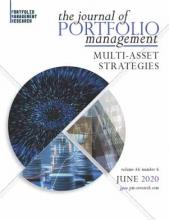
Investment decisions in delegated money management are typically made in two stages. In the first stage, a centralized decision maker allocates capital to the different asset classes. In the second stage, asset managers decide how to allocate available wealth to the individual securities within the corresponding asset class. Although commonly used in investment practice, this approach potentially involves a loss of efficiency compared with a single-step optimization procedure. Lionel Martellini and Vincent Milhau show that this welfare loss is zero if, and only if, the benchmarks completely explain the cross section of expected returns of the securities. This theoretical proposition justifies factor investing as an investment method that constructs investable proxies for pricing factors.
The research has been produced with the support of Lyxor Gestion as part of the “Risk Allocation Solutions” research chair at EDHEC-Risk Institute.
#2 Measuring Portfolio Rebalancing Benefits in Equity Markets, The Journal of Portfolio Management, Multi-Asset Special Issue** (March 2020)
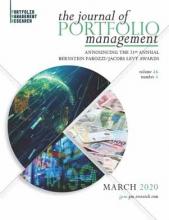
The purpose of this article is to provide a thorough empirical analysis of the volatility pumping effect in equity markets and to examine the conditions under which it can be maximized. Jean-Michel Maeso and Lionel Martellini’s main contribution to the understanding of the rebalancing premium is an effort to disentangle and separately measure the isolated impact of various components of the total effect.
The research has been produced with the support of BDF Gestion as part of the “Maximizing Volatility Pumping Benefits in Equity Markets” research chair at EDHEC-Risk Institute.
#3 Value by Design?, The Journal of Portfolio Management Quantitative Special Issue 2020 ** (January 2020)
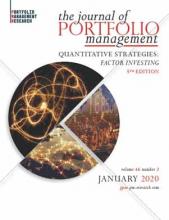
Although academics and practitioners frequently refer in their work to equity value investing, no consensus exists as to what this style exactly encompasses. For a wide range of 3,168 alternative implementations (design choices) of what could all constitute value portfolios, Stephan Kessler, Bernd Scherer and Jan Philipp Harries document the impact of parameter pertubations on risk-adjusted returns. The observed dispersion in Sharpe ratios allows the authors to identify the hierarchy of design choices and to better assess the degrees of freedom consumed within the strategy development process.
The paper has been recognised best 'Systematic Investing Research Paper of The Year' in the EQDerivatives 2020 Awards, recognizing hedge funds and institutional investors active in volatility, multi-asset and systematic investing.
Inspiring results relayed by Bloomberg
#4 Factor Investing in US Sovereign Bond Markets: A New Generation of Conditional Carry Strategies with Applications in Asset-Only and Asset-Liability Management, The Journal of Portfolio Management Quantitative Special Issue 2020** (January 2020)

In this article Jean-Michel Maeso, Lionel Martellini and Riccardo Rebonato provide a detailed analysis of the theoretical, statistical, and implementation challenges related to factor investing in the US sovereign bond markets, with a focus on the level factor, which explains for any maturity the largest fraction of differences in bond returns over time.
The research has been produced with the support of Amundi as part of the “ETF, Indexing and Smart Beta Investment Strategies” research chair at EDHEC-Risk Institute.
#5 What Does Today’s Smile Imply About Future Volatilities?, The Journal of Derivatives ** Spring 2020
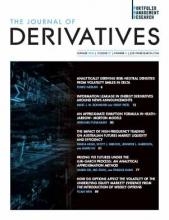
Riccardo Rebonato presents a simple and financially justifiable way to extract the evolution of the smile surface in the (ℚ) measure from today’s plain vanilla option prices. By combining this information with (ℙ)-measure estimation of the dependence of implied volatility on the underlying, one can 1) obtain information about the existence and magnitude of a volatility risk premium; 2) devise trading strategies; and 3) price options such as Forward Volatility Agreements (FVAs).
#6 Defining and Exploiting Value in US Treasury Bonds, The Journal of Fixed Income** Fall 2019
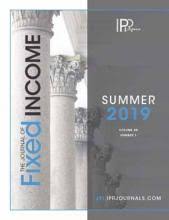
In this article, Riccardo Rebonato, Jean-Michel Maeso and Lionel Martellini propose a definition of value in Treasury bonds that, they believe, is more satisfactory than definitions found in the recent literature, and that allows for statistically significant and economically relevant predictions of cross-sectional excess returns. Their value pricing factor exploits the differences between the market and the theoretical values of Treasury bonds, where the theoretical value is assessed using an economically-justifiable Gaussian dynamic term structure model.
Cutting-hedge research has been mentioned in the Financial Times
#7 "‘Flexicure’ retirement solutions: A part of the answer to the pension crisis?”, The Journal of Portfolio Management ** (July 2019)
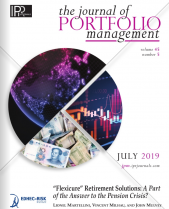
Individuals should not have to choose between security and flexibility when approaching retirement investment decisions. In this article, authors Lionel Martellini, Vincent Milhau and John Mulvey propose to apply the principle of goal-based investing to the design of a new generation of flexicure retirement investment strategies, which aim at offering the best of both worlds between insurance products and asset management products.
Insightful results relayed by the Financial Times, Actuarial Post.
#8 Tail Risk in the Cross Section of Alternative Risk Premium Strategies, The Journal of Portfolio Management Multi-Asset Special Issue 2019**
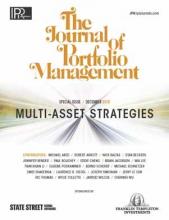
In the paper, Nick Baltas and Bernd Scherer attempt to get a better understanding of the cross-section of alternative risk premiums using a multi-asset version of the downside risk capital asset pricing model (CAPM). In line with the empirical literature, they find that the cross-section of realized returns is much better explained when using the downside CAPM, rather than relying on the traditional CAPM.
The paper has been recognised best 'Academic Research Paper of the Year - Alternative Risk Premia' EQDerivatives 2019 Volatility & Risk Premia Awards, recognizing buyside institutional and hedge fund performance in 2018.
#9 Rich Pickings? Risk, Return, and Skill in Household Wealth, American Economic Review ***** (December 2019)
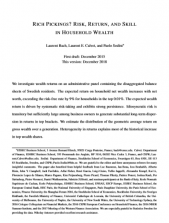
Laurent Bach, Laurent E. Calvet and Paolo Sodini investigate wealth returns on an administrative panel containing the disaggregated balance sheets of Swedish residents. The expected return on household net wealth increases with net worth, exceeding the risk-free rate by 9% for households in the top 0.01%. The expected wealth return is driven by systematic risk-taking and exhibits strong persistence.
#10 A Factor- and Goal-Driven Model for Defined Benefit Pensions: Setting Realistic Benefits, The Journal of Portfolio Management **, Quantitative Special Issue 2019
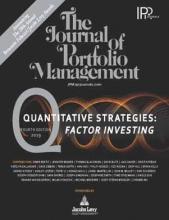
A factor and goal-driven framework for assessing asset allocation and contribution decisions within defined-benefit pension plans is developed in this article. A critical element is setting future benefits with reference to the ability of the pension sponsors to support liabilities under reasonable investment expectations. The approach suggested by the John M. Mulvey, Lionel Martellini, Han Hao and Nongchao Li combines a micro study of a representative cohort of individuals with an aggregation across a target population to estimate consistency between the micro and macro environments.
Stay tuned on our website to be informed on EDHEC-Risk latest research.



